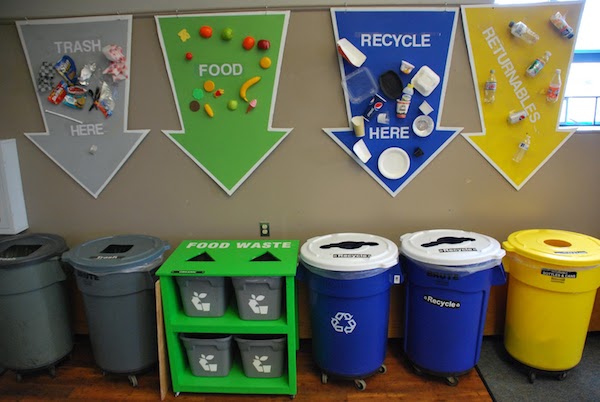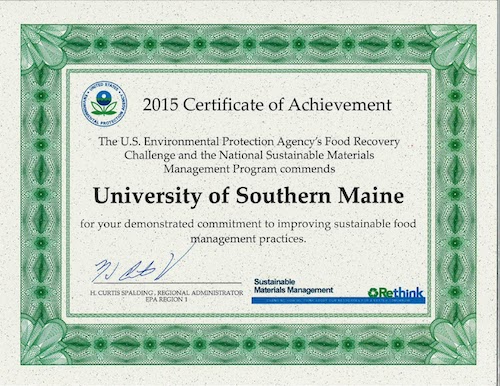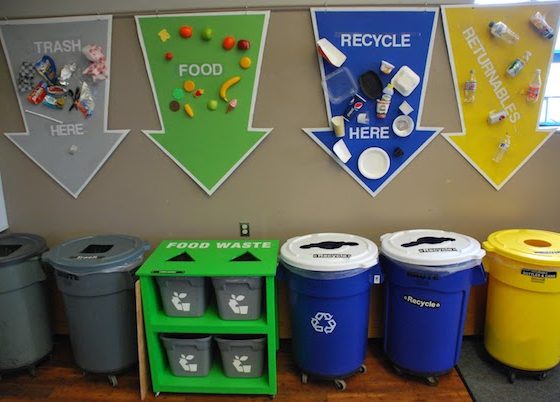Many people are trying to reduce their trash to limit the impact on the planet these days. Most of us now recycle our paper and plastic products. Some collect food scraps and compost them. When grocery shopping, many make lists to avoid buying more than needed and buy bulk to reduce packaging. All of this is just good home waste management. But did you know that companies, organizations and universities are also climbing on board to capture waste generated on their premises that used to end up in landfills and then channel it to alternate recycling streams?
The University of Southern Maine (USM) is a shining example of an early adopter of exploring new and inventive ways that waste can be reduced at the source, recycled, or composted. Their waste management program, which services the Gorham, Portland and Lewiston/Auburn campuses, has come a long way from the day when they tried composting onsite, which dive bombing gulls thwarted and when a pig farmer picked up bags of food waste that had to be painstakingly sorted for the health of the pigs but made collection error prone. Still, even back in 2012, they managed to divert twenty-nine tons of waste from landfills.
By 2019, USM was able to almost quadruple that by recovering a whopping 111.2 tons of waste with the implementation of creative ideas, some initiated by the students. For example, they placed liquid collection containers next to the recycling bins so anyone could dump out the rest of their coffee and then recycle the cup rather than toss it all in the trash. In the dining halls, they switched to paper straws, and introduced programs to reduce food waste at prep, as well as collecting waste at the dishwashing station. They even created a food cupboard for students in need where they funnel viable food that is no longer needed in the kitchens. The University still composts too, but now offsite.

USM works with a highly awarded local start up company, Garbage to Garden, that collects waste, turns it into compost and resells it to gardeners. Check them out at garbagetogarden.org if you are interested in curbside pickup at your home to help close the farm-to-table loop.
To encourage innovative waste management practices, in 2013 the Environmental Protection Agency (EPA) initiated a challenge to prevent and divert wasted food.
“EPA’s Food Recovery Challenge is a voluntary incentive program in which organizations and businesses set data-driven goals, implement targeted strategies to reduce wasted food in their operations, and report results to compete for annual recognition from EPA.”
The University of Southern Maine picked up that challenge and won six of those awards by successfully reimagining sustainable materials management of their waste stream over its entire lifecycle.
“Our original goal was reducing waste production by composting and recycling more on a limited budget. But we quickly learned that reducing food wastes and also wasted food going into the trash resulted in real cost savings which allowed us to grow our program”, said Steve Sweeney, University of Southern Maine’s Resource Recovery Supervisor overseeing the trash recycling and waste management program since 2011.

It may surprise you to learn that the current estimation is that 30% of food is sent to the trash—enough to feed all of the hungry in our country today. 30% of all trash in our landfills is food, with plastic at 18%, and paper at 12% of the total. This means two-thirds of the waste in our landfills could be diverted.
If you are looking for a way to reduce your environmental impact this year you may want to emulate USM and create your own unique waste management plan.

